SGIker, in collaboration with the Area of Education and Participation of the City Council of Leioa, organizes three workshops for the students which are in 2nd Primary of the CEP School Artaza Pinueta de Leioa (2019/12/11)
First publication date: 16/01/2019

Ten students of 7 years of Artaza-Pinueta de Leioa School together with their tutor Ixone Aspiunza and the director of the center, Paz Santana, have participated in the three workshops organized by the General Research Services (SGIker) of the UPV/EHU last December 11th in Leioa (Campus of Bizkaia), in collaboration with the Department of Education and Participation of the City Council of Leioa. The workshops are part of the Eskola Sgiker Program implemented in the 2018-2019 academic year within the STEM activities (Science, Technology, Engineering and Mathematics) aimed at awakening the interest of young children towards scientific activity.
The workshops have been developed in the Services of Nuclear Magnetic Resonance, X-Ray Molecules and Materials and Analysis Center of Bizkaia and Phytotron and Greenhouse. After being received by the director of the SGIker, Maribel Arriortua, next to the fullereno installed in the hall of the Faculty of Science and Technology, the 6 children and 4 girls, expectant and excited, with their corresponding identifying cards and their notebooks, addressed first to the workshop given by doctors Maribel Collado and Azucena González, who in an entertaining and practical way taught them how to create their own slime, a fun polymer with special properties.
Then and after a small lunch, the students of the Artaza-Pinueta School, found with great astonishment and by themselves the processes that take place inside a volcano thanks to the explanations given by the doctors, Aitor Larrañaga and Leyre San Felices.
Finally, Dr. Beatriz Abad showed them in a playful way how to create a natural indicator such as the PH with the cabbage of Lombardy, using the beakers and pipettes for this purpose.
According to their teachers, they liked the experiments which were made and understood much more than "a priori" was supposed. In fact, in the words of the principal of the center, "in the afternoon they told another teacher, who commented how excited they were and everything they had learned".
It should be noted that at all times and despite their young age, These 2nd grade students were very active and participatory with questions and doubts about the samples and their analysis.
- Test Author: Dr. Fátima Pastor
- Images Author: TEM SGIker Jorge Navarro
Image gallery
-
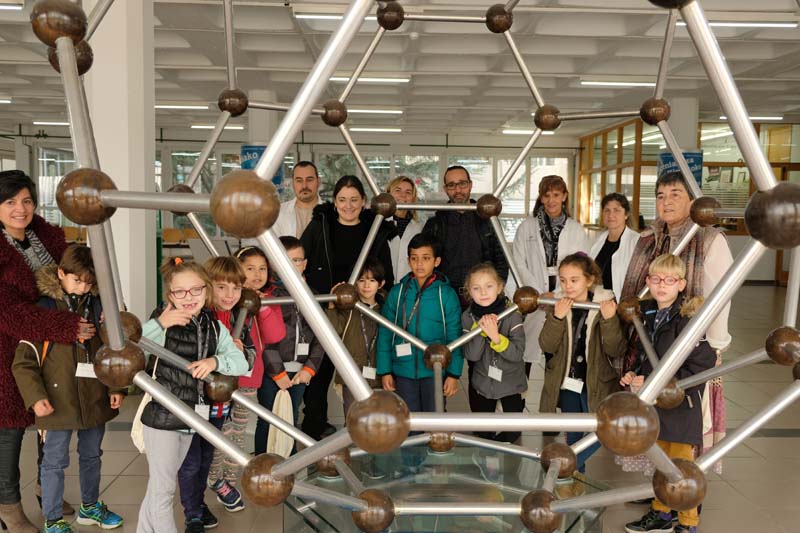
The students of the Artaza-Pinueta School with their tutor Ixone Aspiunza and the director of the center, Paz Santana, together with the Director of the SGIker, Maribel Arriortua and the technical staff of the services, pose in the fullereno installed in the hall of the Faculty of Science and Technology -
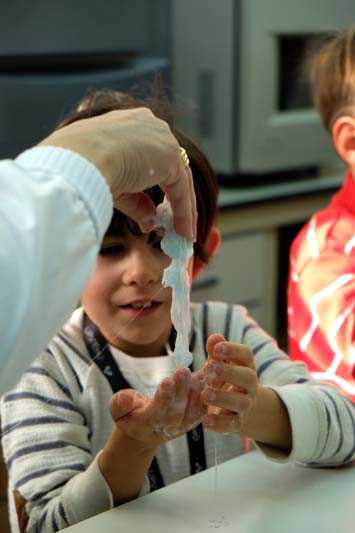
A student of the Artaza-Pinueta School in the Eskola Sgiker workshop "Create your own Slime" -
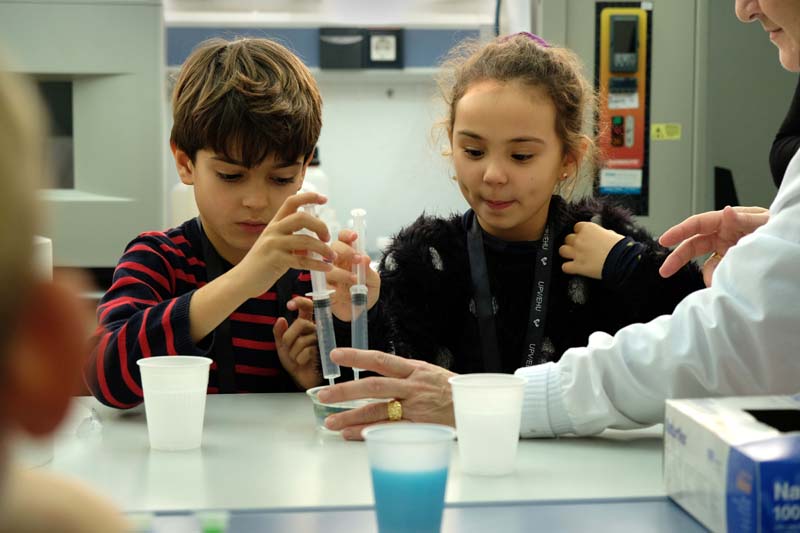
Students of the Artaza-Pinueta School in the Eskola Sgiker workshop "Create your own Slime" -
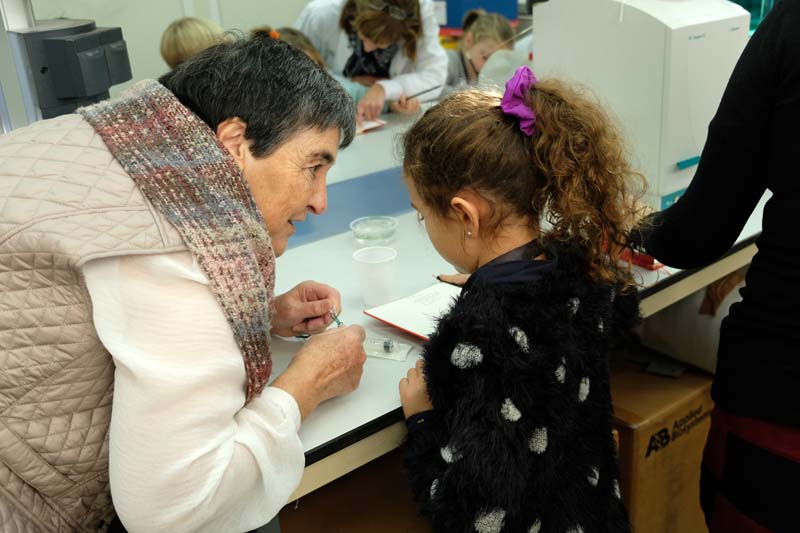
A student of the Artaza-Pinueta School attends the explanations of the Director of General Research Services (SGIker), Maribel Arriortua -
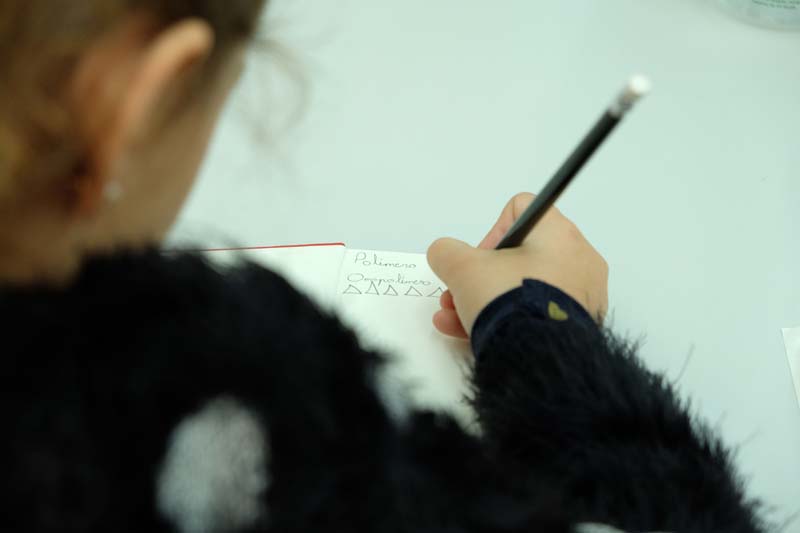
A student of the Artaza-Pinueta School takes note of the explanations in the Eskola Sgiker Workshop "The Lombard as an indicator" -
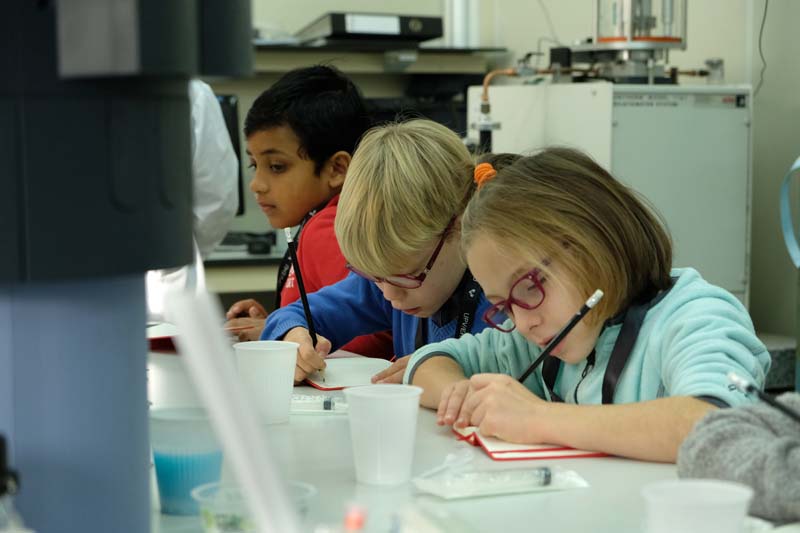
"Sortu zure Slime" Eskola SGIker tailerrean Artaza-Pinuetako ikastetxeko ikasleaStudents of the Artaza-Pinueta School take note in the Eskola Sgiker Workshop "Create your own Slime" -
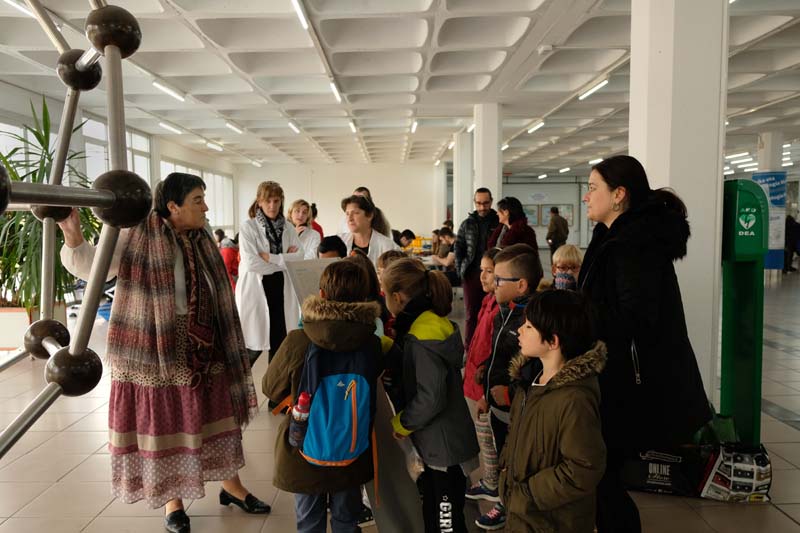
Artaza-Pinueta ikastetxeko ikasleek Maribel Arriortua Ikerkuntzarako zerbitzu orokorren(SGIker) zuzendariaren azalpenei arreta eman diote Zientzia eta teknologia fakultateko hall-ean instalatutako fullerenoazThe students of the Artaza-Pinueta School attend the explanations of the Director of the SGIker, Maribel Arriortua, about the fullerene installed in the hall of the Faculty of Science and Technology -
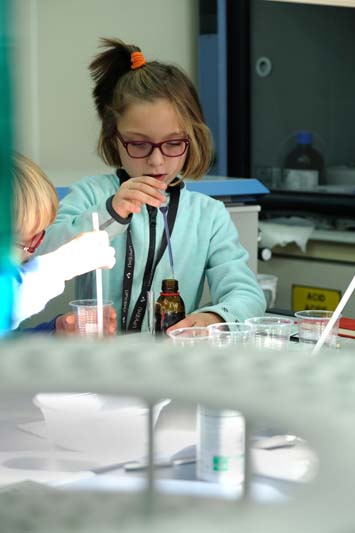
Artaza-Pinuetako ikastetxeko ikasleak SGIker Eskola Tailerrean "Lombarda adierazle gisa" azalpenen nota hartzen dutA student of the Artaza-Pinueta School in the Eskola Sgiker workshop "The Lombard as an indicator" -
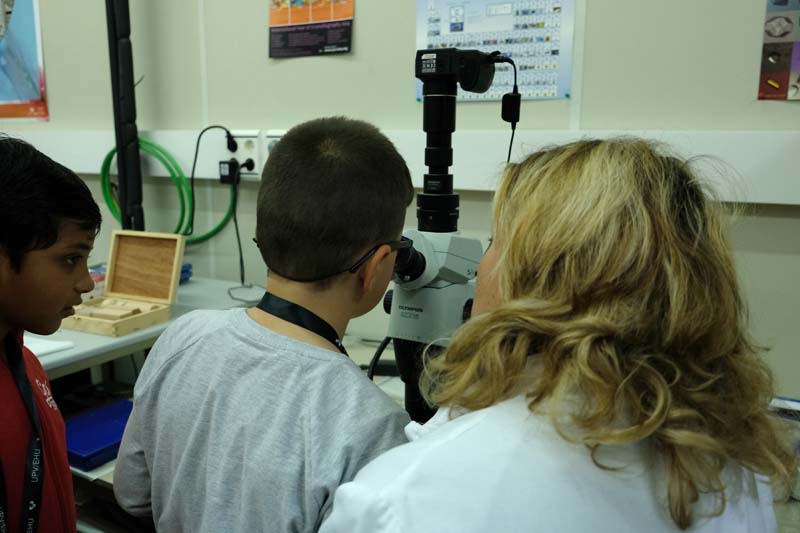
Artaza-Pinueta ikastetxko ikasleak Eskola-SGIker tailerrean "Zer gertatzen da sumendiaren barruan" azalpenei arreta ematenStudents of the Artaza-Pinueta School attending the explanations in the Eskola Sgiker workshop "What happens inside a volcano?" -
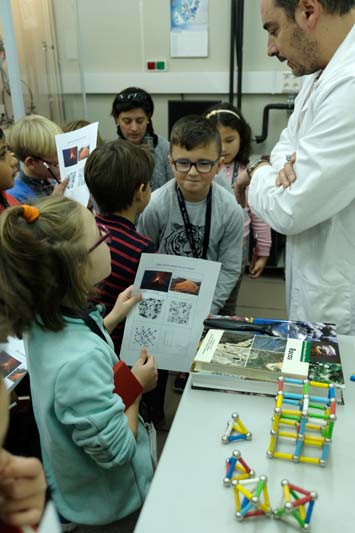
Artaza-Pinueta ikastetxeko ikasleak Eskola-SGIker tailerrean "Zer gertatzen da sumendiaren barruan" azalpenei arreta ematenStudents of the Artaza-Pinueta School attending the explanations in the Eskola Sgiker workshop "What happens inside a volcano?" -
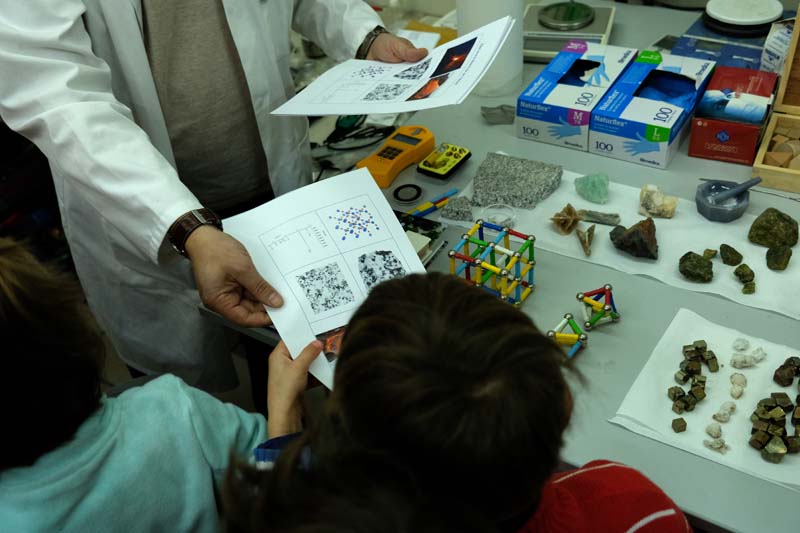
Students of the Artaza-Pinueta School in the Eskola Sgiker workshop "What happens inside a volcano?" -
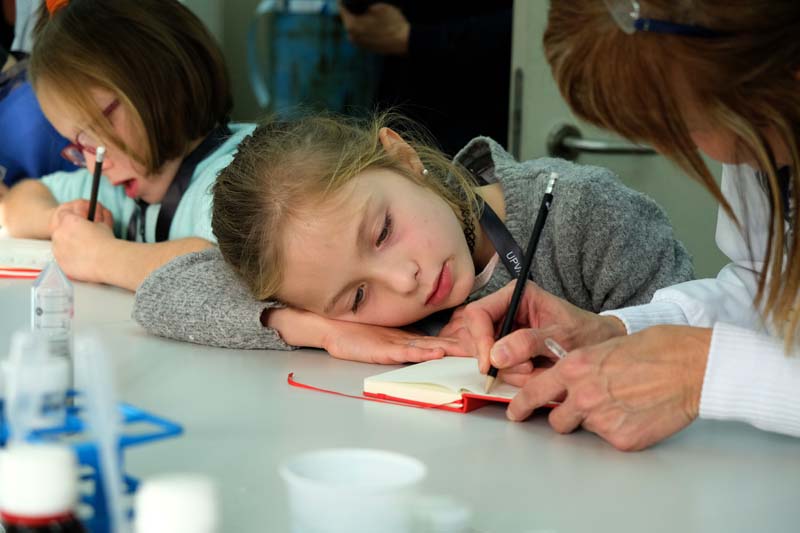
Student of the Artaza-Pinueta School attending the explanations in the Eskola Sgiker workshop "Create your own Slime"

